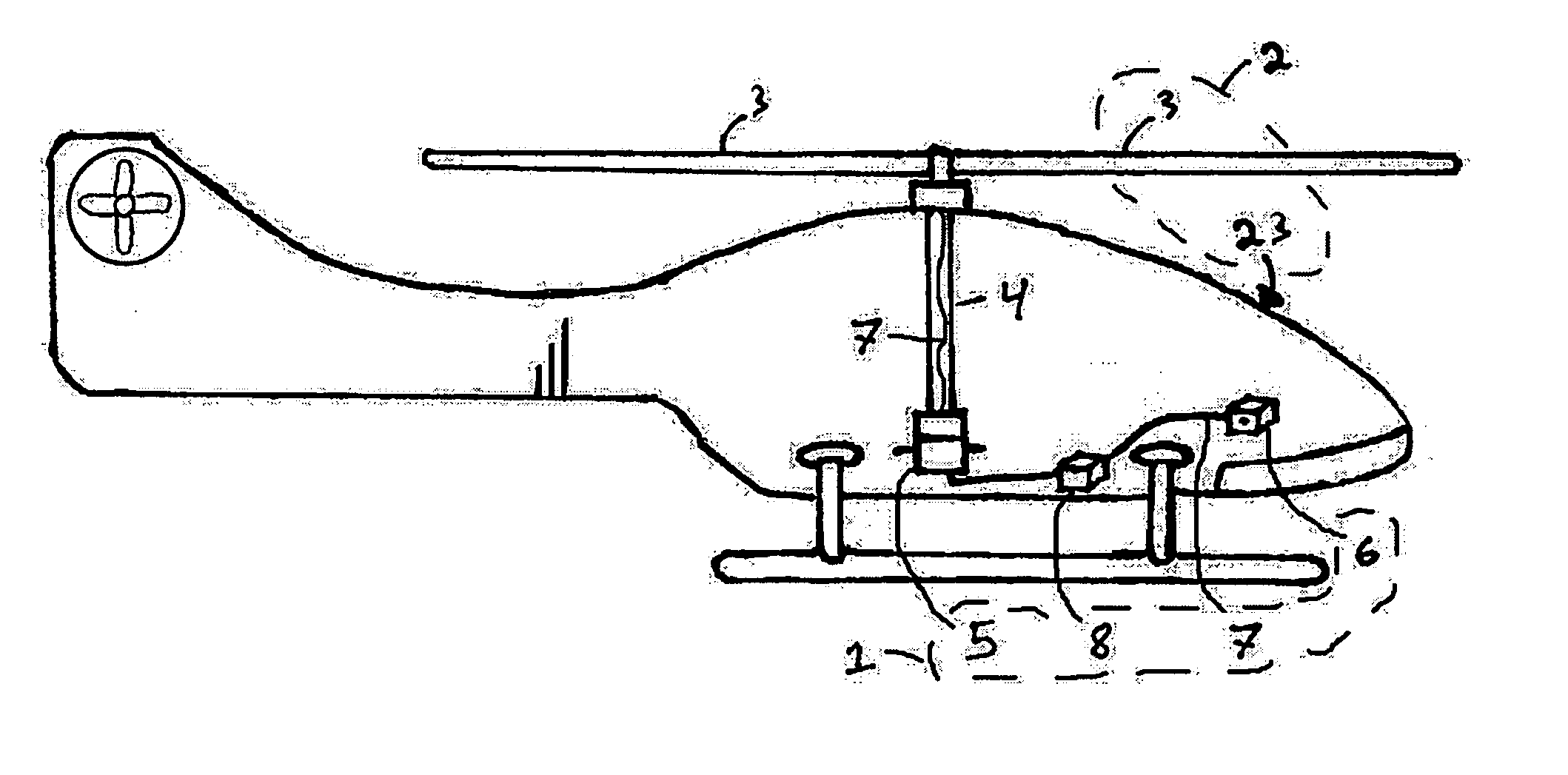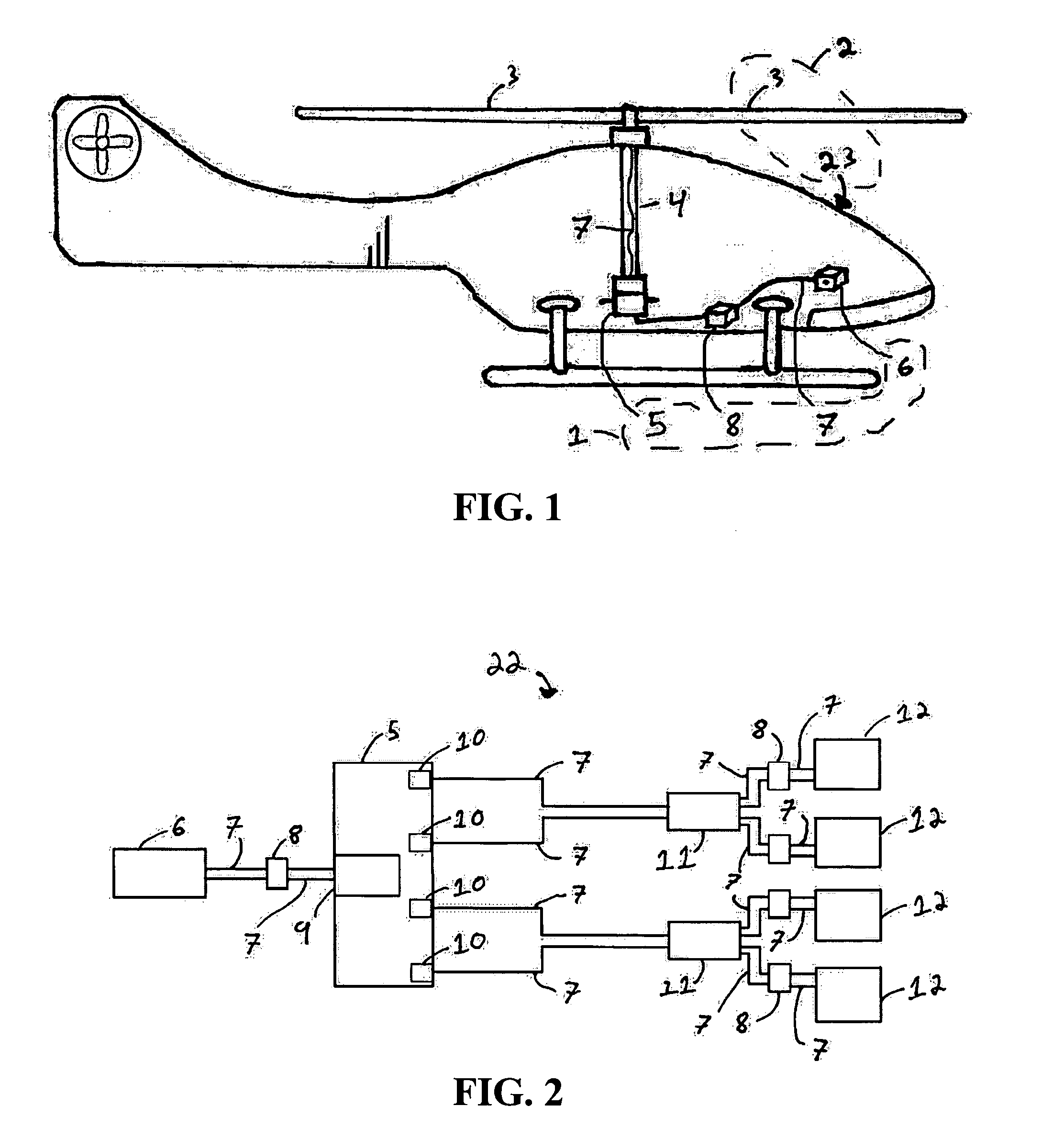Helicopter blade emergency detachment system
a technology of helicopter blades and detachments, which is applied in the field of helicopter blades, can solve the problems of not being able to easily rotate, and not being widely adopted by helicopter occupants
- Summary
- Abstract
- Description
- Claims
- Application Information
AI Technical Summary
Benefits of technology
Problems solved by technology
Method used
Image
Examples
Embodiment Construction
[0020] With reference now to the figures, and in particular to FIG. 1, there is depicted a preferred embodiment of a helicopter blade emergency detachment system 1, shown in further detail in FIGS. 2-6, that includes a signal initiator 6 (preferably mounted in the cockpit of helicopter 2), a transfer system 5, an ignition train 22 (shown in FIG. 2), and linear shaped charges 12 (shown, inter alia, in FIG. 5) placed inside the blade 3.
[0021] The helicopter 2 includes a fuselage 23 and blades 3. While the fuselage can remain stationary during flight, the blades are constantly spinning around it and never come to a rest. This leads to the need for a transfer system 5 to enable the activation signal from the pilot to move between the two parts of the helicopter. However, before the transfer system can be used, the pilot must activate the helicopter blade emergency detachment system by pulling a lever, flicking a switch, or pushing a button on the signal initiator 6 which is a mechanica...
PUM
 Login to View More
Login to View More Abstract
Description
Claims
Application Information
 Login to View More
Login to View More - R&D
- Intellectual Property
- Life Sciences
- Materials
- Tech Scout
- Unparalleled Data Quality
- Higher Quality Content
- 60% Fewer Hallucinations
Browse by: Latest US Patents, China's latest patents, Technical Efficacy Thesaurus, Application Domain, Technology Topic, Popular Technical Reports.
© 2025 PatSnap. All rights reserved.Legal|Privacy policy|Modern Slavery Act Transparency Statement|Sitemap|About US| Contact US: help@patsnap.com



